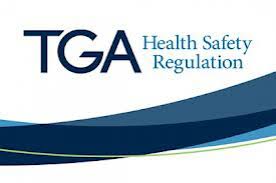The Therapeutic Goods Administration (TGA) of Australia has published detailed guidelines describing the most important aspects related to the Essential Principles. The publication is intended to provide medical device manufacturers, sponsors, and other parties involved in operations with medical devices with the additional information to be considered in order to achieve and sustain compliance with the applicable regulatory requirements set forth in Australia. In this way, the TGA intended to ensure that any and all medical devices marketed and used in the country meet applicable safety and performance requirements.

Regulatory Background
According to the general rule, in order to be allowed to market its products in Australia, a medical device manufacturer shall demonstrate compliance with the Essential Principles set forth by the Therapeutic Goods (Medical Devices) Regulation 2002, one of the most important country’s regulations in the sphere of medical devices.
As it is stated by the TGA, there are six general Essential Principles and nine design- and construction-specific principles to be applied only if needed.
The six general principles include the following ones:
- Use of medical devices not to compromise health and safety,
- Design and construction of medical devices to conform to safety principles,
- Medical devices to be suitable for an intended purpose,
- Long-term safety,
- Medical devices not to be adversely affected by transport or storage,
- Benefits of medical devices outweigh any side effects.
The document also provides the list of nine design- and construction-specific Essential Principles, namely:
- Chemical, physical and biological properties,
- Infection and microbial contamination,
- Construction and environmental properties,
- Medical devices with a measuring function,
- Protection against radiation,
- Medical devices connected to or equipped with an energy source,
- Information to be provided with medical device,
- Clinical evidence,
- Principles applying to IVD (in vitro diagnostic) medical devices only.

Conformity Assessment of Medical Devices
The TGA states that in order to verify compliance with the Essential Principles outlined here a conformity assessment should be conducted. In the course of such an assessment, the appropriate examination should be performed to check whether the medical device subject to review meets the applicable requirements in terms of safety, performance, benefits, and also the risks associated with its use.
The particular conformity assessment procedures to be conducted would depend on the class of a medical device subject to review under the applicable risk-based classification. The regulating authority additionally emphasizes that the higher the risk class the device is assigned to, the stricter would be the requirements and procedures to be applied.
Essential Principles in Detail
A detailed description of the Essential Principles medical devices shall comply with is provided in Schedule 1 of the Therapeutic Goods (Medical Devices) Regulation 2002. According to the Essential Principles, the following rules should be applied:
- A medical device should be designed in a way minimizing the risks of any impact caused to the device during storage and transportation. In particular, the packaging of a medical device should prevent any impact that could be potentially caused by external factors or mitigate its consequences. The same approach should be applied with regard to risks associated with contamination.
- When designing a medical device, the manufacturer should also take into consideration the aspects related to the impact caused by gases, liquids, or other substances a medical device would contact when being used for the intended purpose. Thus, the components and materials used should ensure a sufficient level of resistance against any impact caused by the aforementioned factors. At the same time, if a medical device is intended to be used with the medicine, it should be verified that the medical device itself would not impact the medicine used.
- In the case that a medical device incorporates a substance (also referred to as a “combination product”), both components should be verified together, including the way they could potentially impact each other when being stored, transported, or used.
- Additionally, the medical device manufacturer shall ensure that the risks associated with the leakage of medicines and other substances from a medical device are mitigated to the maximum extent possible.
- One of the most important principles addresses the aspects related to contamination – in particular, the medical device manufacturer shall take all the measures necessary to reduce the risks of contamination the patient using the device or any other person are exposed to.
- Special rules and approaches should be applied for sterile medical devices. For instance, the medical device manufacturer shall ensure the device remains sterile when being stored and transported, proving that such storing or transportation are being performed strictly in accordance with the recommendations and instructions to be provided by the manufacturer. Moreover, it is important to mention that sterilization procedures applied by the medical device manufacturer should be also subject to validation in order to ensure their effectiveness.
- However, in the case of non-sterile medical devices, the applicable requirements are not so strict as in the case with sterile ones. It is stated that the packaging of a medical device should keep it clean and minimize the risks of microbial contamination, while the medical device itself should be manufactured in appropriately controlled conditions.
- Moreover, the labeling and packaging of a medical device shall contain a clear indication of whether the medical device is sterile or non-sterile.
- If the medical devices are designed to be used together, the manufacturer shall ensure they do not impact the safety and effectiveness of each other.
One of the most important sections of the Essential Principles is dedicated to the aspects related to the minimization of risks associated with the use of medical devices. According to the applicable regulation, a medical device should be designed in a way ensuring that the risks associated with the device are reduced to the lowest extent possible.
The regulation also outlines the risks associated with:
- The injury that potentially could be caused due by the physical characteristics of a medical device,
- Foreseeable environmental conditions,
- Reciprocal interference of medical devices being used simultaneously or in the same user environment,
- Inability to perform the calibration as required to ensure the correct performance of a medical device,
- Aging of the components and materials the medical device is composed of,
- Loss of accuracy of any measuring function or control the medical device incorporates,
- Flammable materials used in the device,
- Disposal of any waste substances.
Summarizing the information provided here, the Essential Principles set forth by the Therapeutic Goods (Medical Devices) Regulation 2002 establish the regulatory basics of the approach to be applied to medical devices in order to ensure their safety and effectiveness. The scope of the Essential Principles covers the most important aspects related to the use of medical devices for the intended purpose initially defined by the manufacturer, as well as the risks associated thereto. According to the applicable Australian legislation on medical devices, the aforementioned Essential Principles should be considered by medical device manufacturers on the design and development stages to ensure compliance with the appropriate requirements. The same approach should be applied in the case of products manufactured by foreign medical device manufacturers and intended to be placed on the market and used in Australia.
How Can RegDesk Help?
RegDesk is a next-generation web-based software for medical device and IVD companies. Our cutting-edge platform uses machine learning to provide regulatory intelligence, application preparation, submission, and approvals management globally. Our clients also have access to our network of over 4000 compliance experts worldwide to obtain verification on critical questions. Applications that normally take 6 months to prepare can now be prepared within 6 days using RegDesk Dash(TM). Global expansion has never been this simple.
Sources:
https://www.tga.gov.au/manufacture-medical-devices-quality-management

